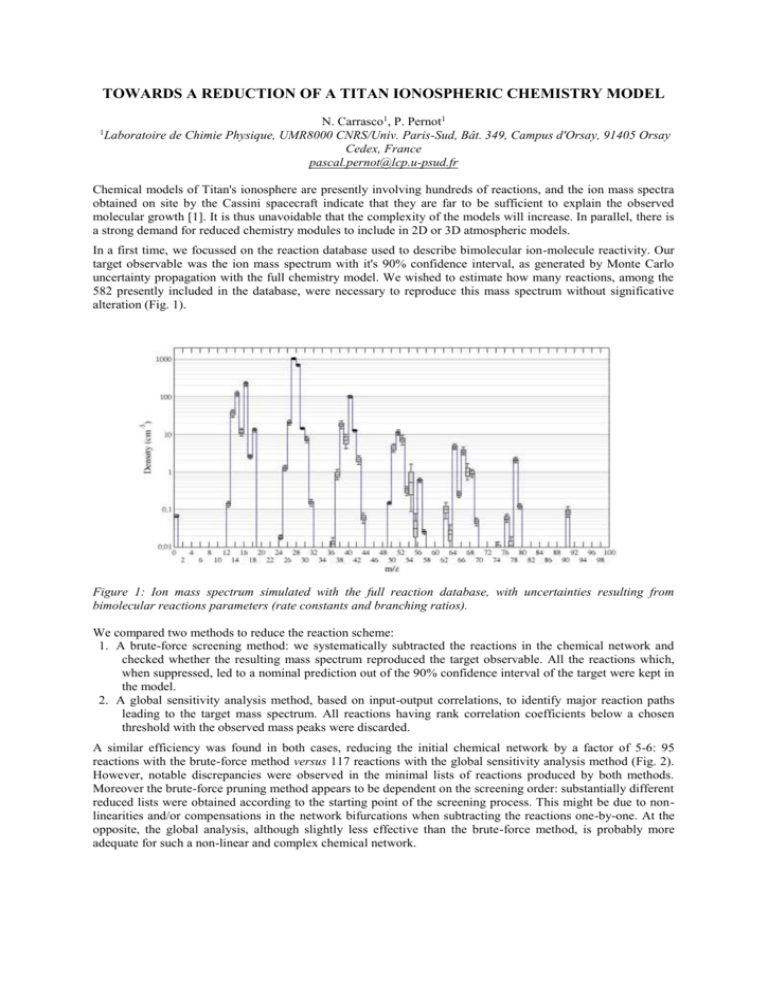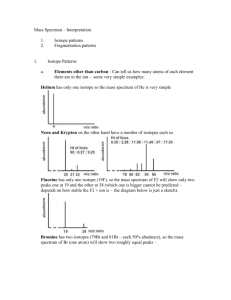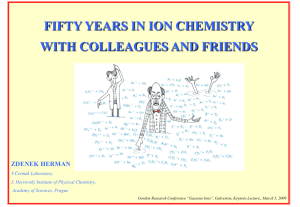Document 7821352
advertisement

TOWARDS A REDUCTION OF A TITAN IONOSPHERIC CHEMISTRY MODEL N. Carrasco1, P. Pernot1 Laboratoire de Chimie Physique, UMR8000 CNRS/Univ. Paris-Sud, Bât. 349, Campus d'Orsay, 91405 Orsay Cedex, France pascal.pernot@lcp.u-psud.fr 1 Chemical models of Titan's ionosphere are presently involving hundreds of reactions, and the ion mass spectra obtained on site by the Cassini spacecraft indicate that they are far to be sufficient to explain the observed molecular growth [1]. It is thus unavoidable that the complexity of the models will increase. In parallel, there is a strong demand for reduced chemistry modules to include in 2D or 3D atmospheric models. In a first time, we focussed on the reaction database used to describe bimolecular ion-molecule reactivity. Our target observable was the ion mass spectrum with it's 90% confidence interval, as generated by Monte Carlo uncertainty propagation with the full chemistry model. We wished to estimate how many reactions, among the 582 presently included in the database, were necessary to reproduce this mass spectrum without significative alteration (Fig. 1). Figure 1: Ion mass spectrum simulated with the full reaction database, with uncertainties resulting from bimolecular reactions parameters (rate constants and branching ratios). We compared two methods to reduce the reaction scheme: 1. A brute-force screening method: we systematically subtracted the reactions in the chemical network and checked whether the resulting mass spectrum reproduced the target observable. All the reactions which, when suppressed, led to a nominal prediction out of the 90% confidence interval of the target were kept in the model. 2. A global sensitivity analysis method, based on input-output correlations, to identify major reaction paths leading to the target mass spectrum. All reactions having rank correlation coefficients below a chosen threshold with the observed mass peaks were discarded. A similar efficiency was found in both cases, reducing the initial chemical network by a factor of 5-6: 95 reactions with the brute-force method versus 117 reactions with the global sensitivity analysis method (Fig. 2). However, notable discrepancies were observed in the minimal lists of reactions produced by both methods. Moreover the brute-force pruning method appears to be dependent on the screening order: substantially different reduced lists were obtained according to the starting point of the screening process. This might be due to nonlinearities and/or compensations in the network bifurcations when subtracting the reactions one-by-one. At the opposite, the global analysis, although slightly less effective than the brute-force method, is probably more adequate for such a non-linear and complex chemical network. Figure 2: Left: “full” ion-molecule reactions network (582 reactions); right: reduced network after global sensitivity analysis, reproducing the target ion mass spectrum within uncertainties (117 reactions). The lines join ions related by an ion-molecule reaction; neutral species are not specified. Acknowledgements We acknowledge the support received from the Centre National de Recherche Scientifique (CNRS) and from the Centre National d'Etudes Spatiales (CNES) through postdoctoral positions for N.C. References [1] Carrasco N, Banaszkiewicz M, Thissen R, Dutuit O, Pernot P. Uncertainty analysis of bimolecular reactions in Titan ionosphere chemistry model. Planetary and Space Science. 55, 141-157 (2007)










